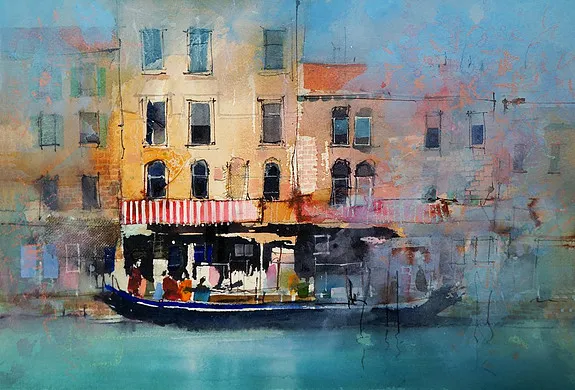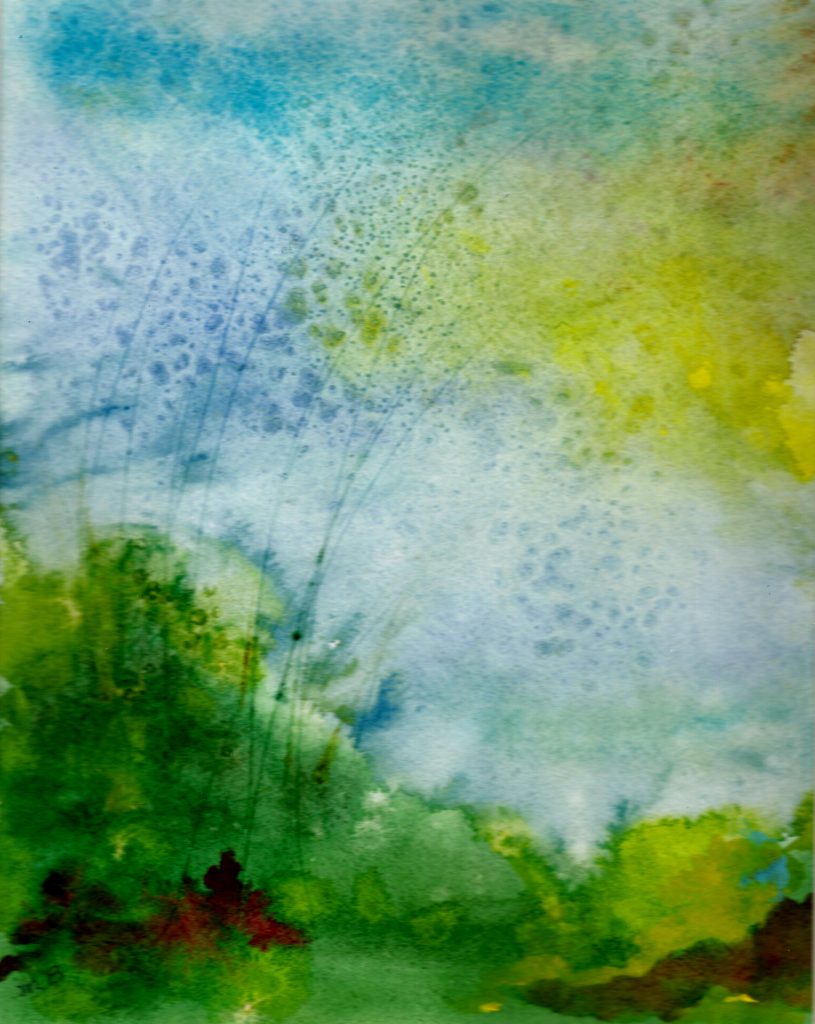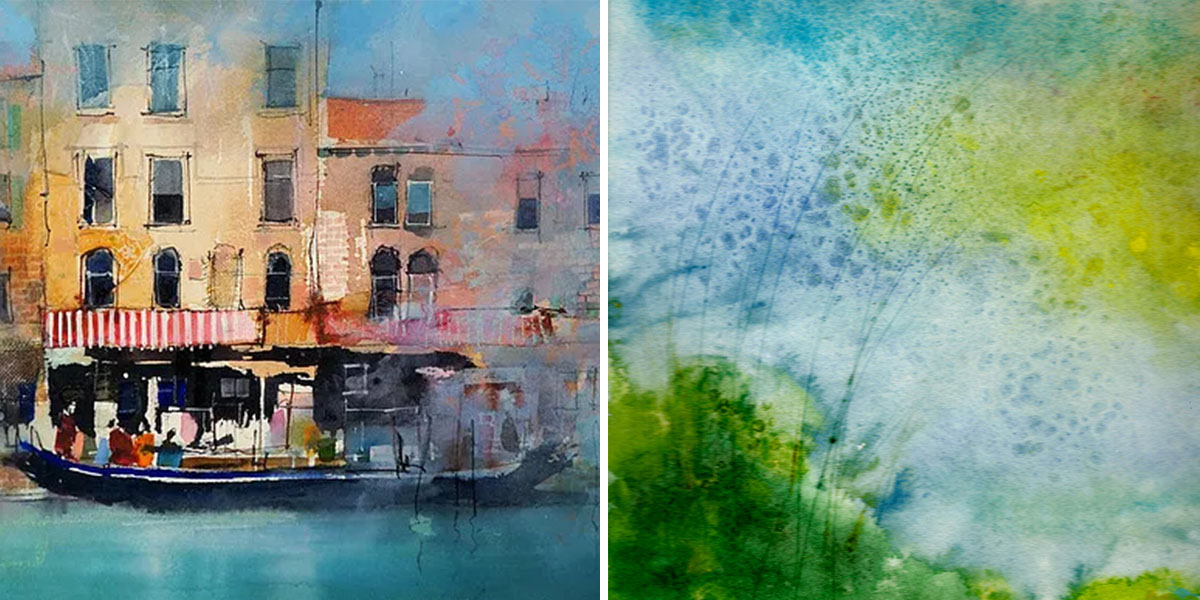The salt technique in watercolor is a creative method that takes advantage of salt’s ability to absorb water and pigment, producing unique patterns and textures. This technique is mainly used to create abstract effects, such as stars in night skies or organic textures. Salt is sprinkled onto wet paint, and as it dries, it absorbs the surrounding pigment, leaving characteristic sparkling shapes and tonal variations.
This technique began to be explored in the early 20th century by artists experimenting with new methods in watercolor. The introduction of salt brought a new dimension to the medium, enabling the creation of unpredictable and striking textures. Today, it remains popular among contemporary watercolorists as it offers an easy way to achieve impressive results without the need for complex tools.
The salt pattern technique remains a powerful tool for artists who wish to add complexity and depth to their watercolors in a simple and creative way.
The most famous contemporary watercolorists who often use this technique in their work are Jean Haines and John Lovett.

John Lovett
Jean Haines







